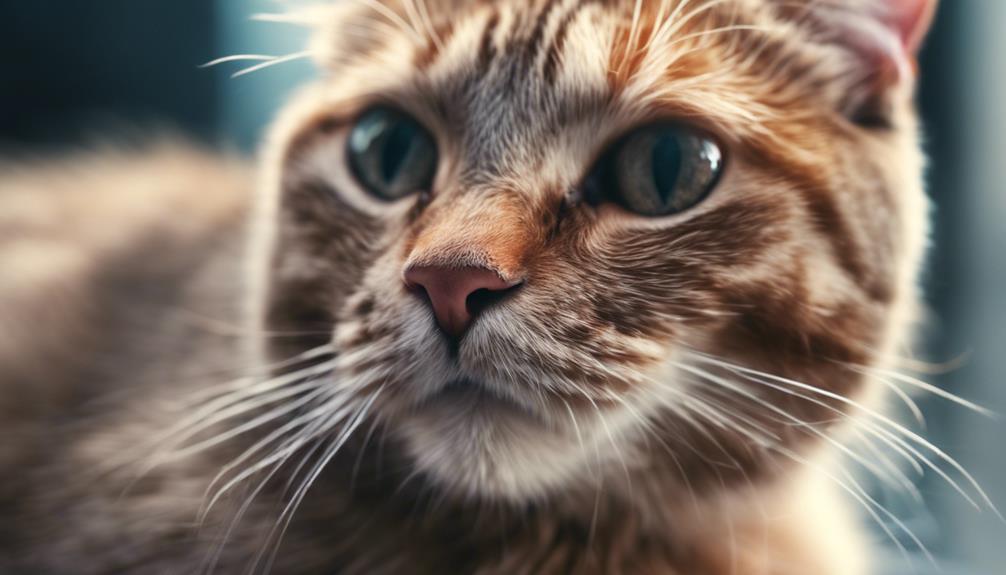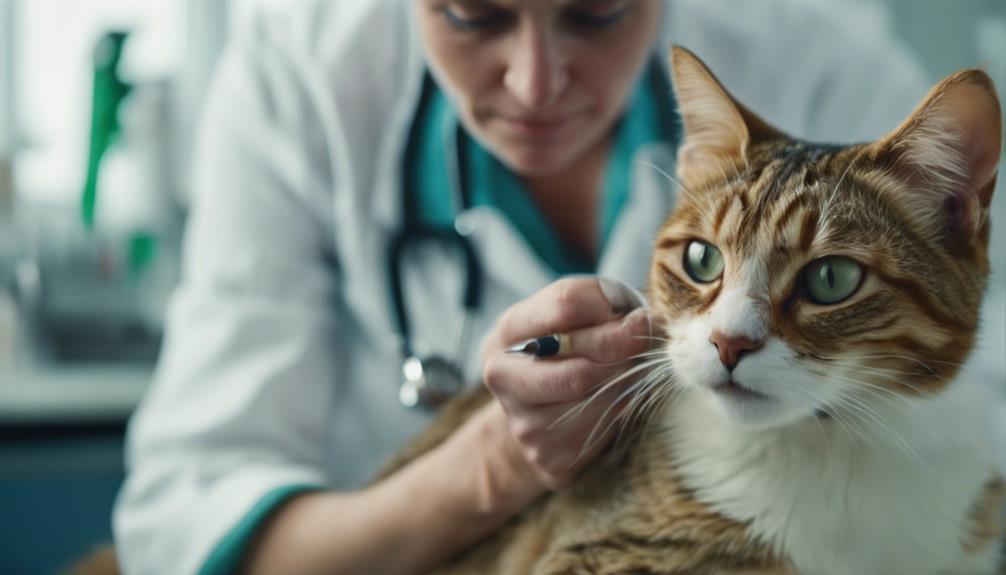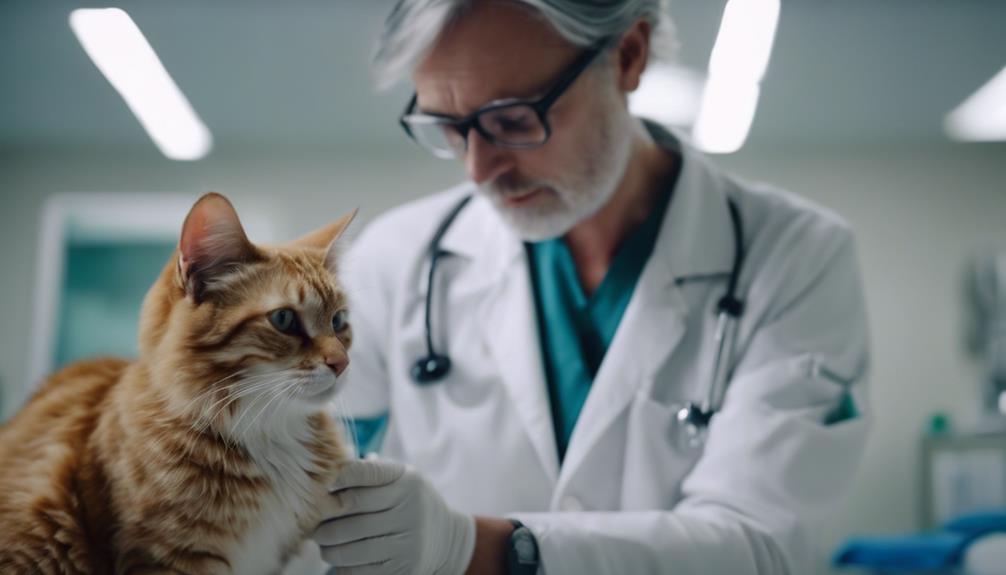Mastitis in cats is a concerning condition that demands attention due to its potential health implications. From bacterial infections to galactostasis, the causes of this inflammation are varied and require a keen understanding to effectively address them.
Recognizing the susceptibility factors and early symptoms is pivotal for timely intervention, as prompt diagnosis and tailored treatment are crucial in managing this ailment.
By exploring the preventive strategies available, including hygiene practices and spaying considerations, we can strive towards safeguarding our feline companions from the perils of mastitis.
Key Takeaways
- Bacterial infections and physiological changes are common causes of mastitis in cats.
- Diagnosis involves milk cytology, culture, blood work, and physical exams.
- Treatment ranges from home care to hospital interventions tailored with a vet.
- Prevention includes hygiene practices, equal nursing, and regular monitoring for mastitis in cats.
Definition
Mastitis in cats is the inflammatory condition affecting the mammary gland, commonly triggered by bacterial infections or galactostasis. This painful swelling, often accompanied by redness, affects lactating queens but can also occur in non-pregnant cats.
The condition, if left untreated, can lead to serious complications such as sepsis. Recognizing the signs early, such as changes in milk production or appearance, is crucial for prompt intervention. Veterinarians typically diagnose mastitis through milk cytology, cultures, and physical exams.
Treatment ranges from oral antibiotics and pain management at home to more aggressive interventions in severe cases, including surgery. Preventive measures like maintaining hygiene, ensuring proper nursing practices, and considering spaying can help reduce the likelihood of mastitis occurrence in cats.
Causes
The primary factors contributing to the development of inflammation in the mammary gland of cats are bacterial infections, notably Escherichia coli, Staphylococcus sp., and Streptococcus sp., along with galactostasis. Bacterial invasion through the teat canal during nursing or skin wounds around the teats can lead to infection. Galactostasis, which is the accumulation of milk within the mammary gland, can also contribute to mastitis by creating a favorable environment for bacterial growth. Below is a table illustrating the causes of mastitis in cats:
| Causes of Mastitis in Cats | |
|---|---|
| Bacterial Infections | Escherichia coli |
| Staphylococcus sp. | |
| Streptococcus sp. | |
| Galactostasis |
Susceptibility

Susceptibility to mastitis in cats is influenced by various factors, particularly the physiological state of the cat and the presence of predisposing conditions. Understanding these factors can help cat owners take preventive measures to protect their feline companions from this painful condition.
Factors affecting susceptibility include:
- Physiological changes during and after pregnancy
- Hormonal fluctuations
- Presence of fake pregnancies
- Immunocompromised states
Symptoms
Manifestations of mastitis in cats typically include redness, swelling, and pain in the mammary glands, alongside changes in milk appearance and production. Affected cats may exhibit signs of discomfort when their mammary glands are touched or nursing, and the affected area can feel warm to the touch.
The milk produced may appear abnormal, sometimes containing pus or blood, and the production may decrease. In severe cases, there can be systemic signs of infection such as lethargy, fever, and loss of appetite.
It is essential to monitor these symptoms closely and seek veterinary care promptly to prevent complications and ensure the well-being of the cat.
Diagnosis

Upon observing symptoms suggestive of mastitis in a cat, a veterinarian typically employs diagnostic procedures to confirm the condition accurately.
The following are common methods used for diagnosing mastitis in cats:
- Milk Cytology: Examination of milk samples under a microscope to identify inflammatory cells and bacteria.
- Milk Culture: Testing milk samples to determine the specific bacteria causing the infection.
- Blood Work: Assessing blood parameters to check for signs of systemic infection or inflammation.
- Physical Exams: Palpation of the mammary glands to evaluate for swelling, pain, and changes in tissue consistency.
These diagnostic tools help veterinarians in confirming mastitis and determining the appropriate course of treatment for the affected cat.
Treatment
When addressing mastitis in cats, the treatment protocol typically involves a combination of home care and, in severe cases, hospital interventions.
Home care may include administering oral antibiotics, providing pain medication, and implementing local treatments to the affected mammary gland. It is essential to closely monitor the cat's progress and follow the veterinarian's instructions diligently.
In more severe instances where the infection has escalated, hospital interventions such as intravenous fluids, aggressive antibiotic therapy, and even surgery may be necessary to address the condition effectively. Prompt and appropriate treatment is crucial in ensuring the cat's recovery and preventing potential complications associated with mastitis.
Regular communication with the veterinarian is key to tailoring the treatment plan to the cat's specific needs.
Prevention

To mitigate the risk of mastitis in cats, proactive hygiene practices and regular monitoring are essential. When it comes to prevention, there are several key steps that cat owners can take to safeguard their feline companions:
- Maintain Clean Bedding: Regularly clean and change the bedding to prevent the buildup of bacteria.
- Trim Kittens' Nails: Keep kittens' nails trimmed to reduce the risk of scratching the mother's delicate breast tissue.
- Ensure Equal Nursing: Monitor nursing sessions to ensure all kittens have equal access to milk, preventing engorgement in specific mammary glands.
- Hygiene Practices: Practice good hygiene by washing your hands before handling the kittens to prevent the transmission of bacteria.
Home Care
In addressing the care of a cat experiencing mastitis, implementing proper home management practices is crucial for ensuring the well-being and recovery of the affected feline.
Providing a comfortable and clean environment for the cat is essential. Make sure the cat has a quiet and warm place to rest, away from any potential stressors.
Administer any prescribed oral antibiotics and pain medication as directed by the veterinarian. Gently clean the affected mammary glands with warm water and a mild antiseptic solution as recommended.
Monitor the cat closely for any changes in behavior, appetite, or the appearance of the affected area. Ensure the cat stays hydrated and continues to eat well.
Regularly communicate with the veterinarian to track progress and address any concerns promptly.
Hospital Care

Hospital care for feline mastitis involves providing intensive medical intervention to manage the inflammation and associated symptoms effectively. When your cat requires hospitalization for mastitis, here's what you can expect:
- Round-the-clock Monitoring: Your cat will receive constant attention from veterinary professionals.
- Intravenous Fluid Therapy: Ensures your cat stays hydrated and aids in flushing out toxins.
- Aggressive Antibiotic Treatment: Administered to combat the bacterial infection causing mastitis.
- Pain Management: Ensuring your cat is comfortable throughout the treatment process.
These measures aim to address the severity of the condition promptly and provide the best chance for a quick and successful recovery for your feline companion.
Frequently Asked Questions
Can Mastitis in Cats Be Transmitted to Humans or Other Pets?
Mastitis in cats is not typically transmissible to humans or other pets. It is important to maintain good hygiene practices while caring for a cat with mastitis to prevent secondary infections, but direct transmission to humans or other pets is rare.
Are There Any Alternative or Complementary Treatments for Mastitis in Cats?
Alternative or complementary treatments for mastitis in cats may include herbal remedies, acupuncture, or probiotics. While these options can be explored, they should be discussed with a veterinarian to ensure they are safe and effective.
How Long Does It Typically Take for a Cat to Recover From Mastitis?
Recovery time for cats with mastitis varies based on severity, treatment, and individual factors. Typically, mild cases may improve in 1-2 weeks with proper care, while severe cases may require several weeks of treatment and monitoring for full recovery.
Are There Any Long-Term Effects or Complications Associated With Mastitis in Cats?
Long-term effects or complications of mastitis in cats may include chronic mammary gland changes, reduced milk production affecting kittens, and potential recurrence of infection if underlying causes are not addressed. Timely treatment and preventive measures are crucial.
Is There a Genetic Predisposition for Mastitis in Certain Cat Breeds?
While mastitis in cats is primarily linked to bacterial infections and lactation issues, research suggests genetic predispositions may exist in certain cat breeds. Further studies are needed to determine the extent of this potential genetic influence.
Conclusion
In conclusion, mastitis in cats is a serious inflammatory condition of the mammary gland that can be caused by bacterial infections and galactostasis. Early detection, prompt veterinary evaluation, and appropriate treatment are essential for the well-being of feline companions.
Implementing preventive measures, such as hygiene practices and spaying considerations, can help reduce the incidence of mastitis in cats. Overall, understanding the causes, diagnosis, treatment, and prevention strategies for mastitis is crucial for feline health.




